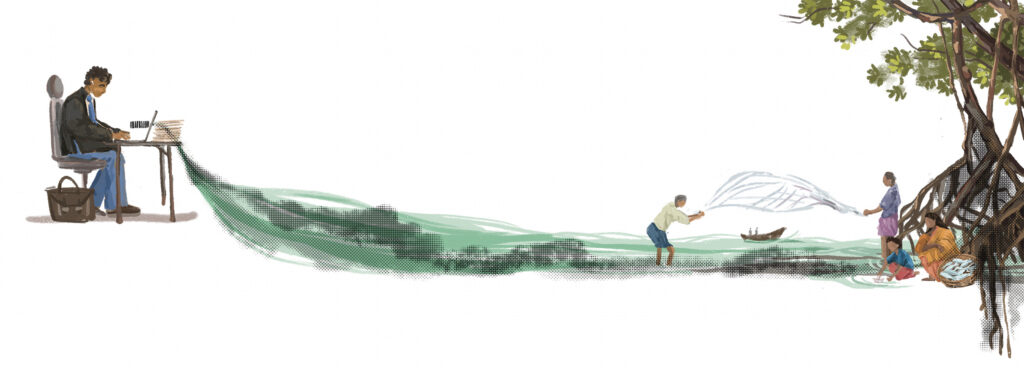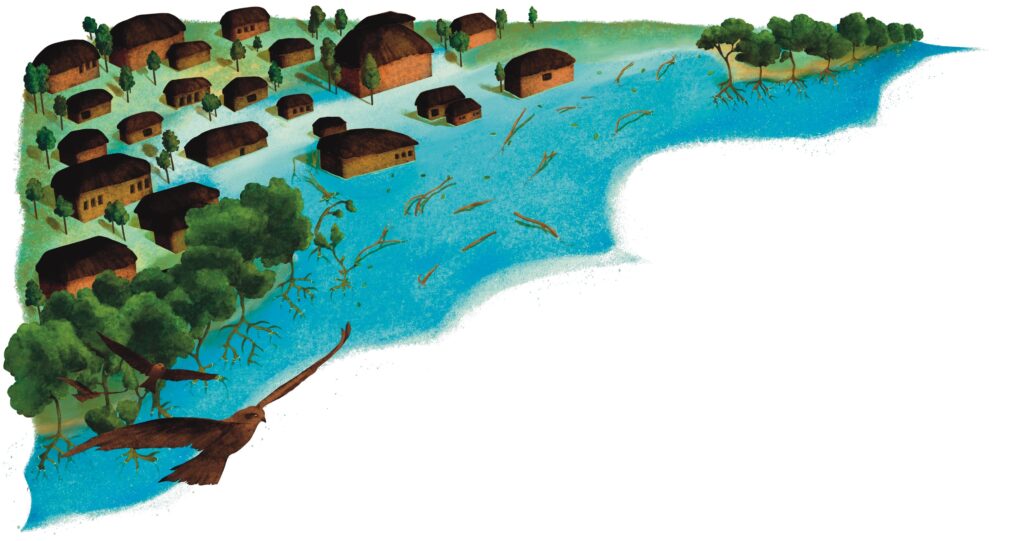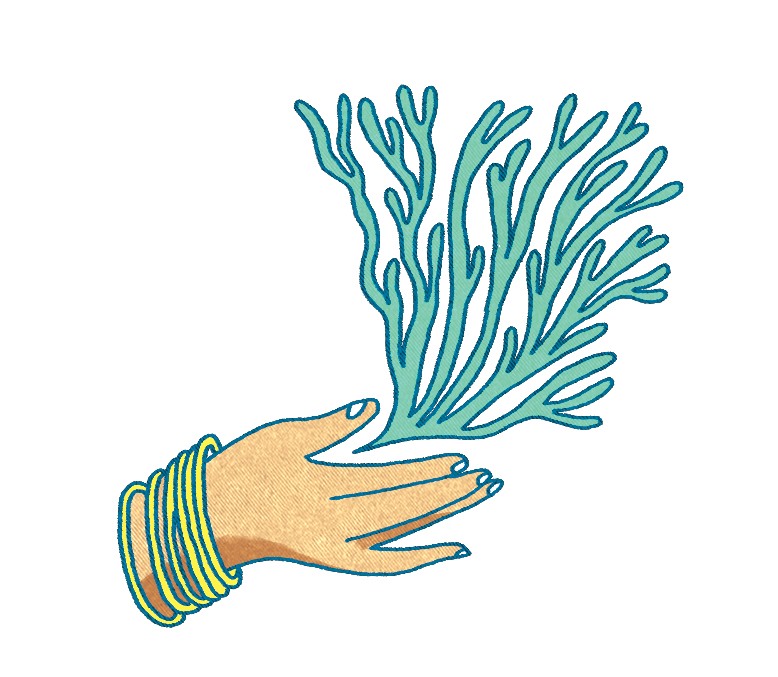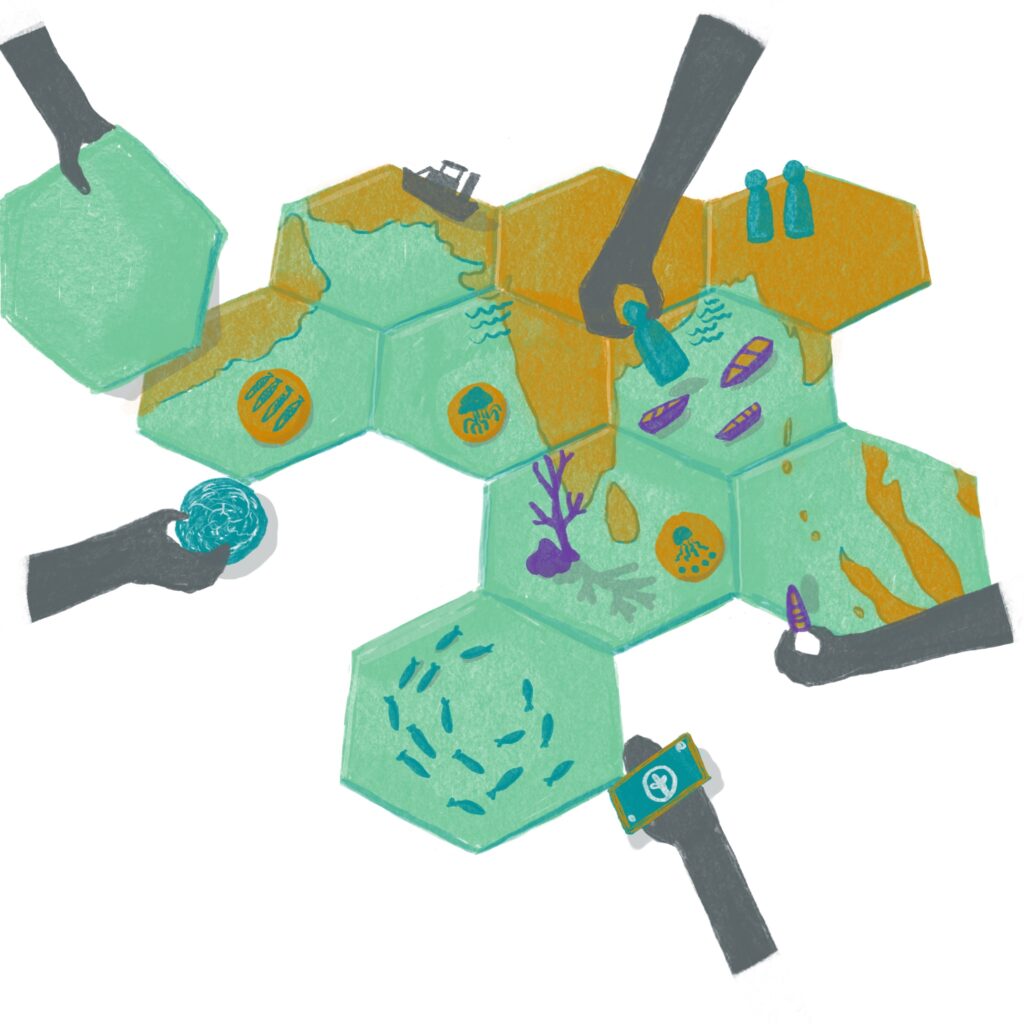Drive along the Ratnagiri coast in western India in the early months of any year, and you are sure to come across a fenced-off enclosure on many of its beaches. The inside of the enclosure is usually dotted with small, evenly-spaced placards, while outside a fluttering banner or a wooden board declares it to be a sea turtle hatchery. Hatcheries, in general, are synonymous with sea turtle conservation the world over. But the efficacy of these structures in protecting sea turtle eggs and hatchlings (baby turtles) depends on whether the hatcheries follow best practices. As a conservation technique, freshly laid nests that are moved from their original locations on exposed beaches to protected hatcheries should—in theory produce more hatchlings than nests that are left unprotected. With fewer resources available and an increasing urgency for conservation actions to succeed, how do we know if the conservation strategy works?
Evidence-based conservation
For those of us familiar with the crime genre, evidence is a term used mainly in legal proceedings that eventually leads to a person being implicated (or not!) in some wrongdoing. Similarly, evidence plays a crucial role in many other action-based disciplines, including medicine, education, social work, and biodiversity conservation. The concept of evidence-based practice originated back in 1981 when a group of epidemiologists, led by Dr. David Sackett, suggested using evidence in medical sciences to choose the best treatment for their patients. They recommended that physician decisions needed to be informed by a well-rounded, systematic evaluation of available medical literature. Later, it came to be known as evidence-based medicine, a phrase coined by Dr. Gordon Guyatt and his team, and the practice served as a tool for physicians to determine the best course of action to reduce patient ailments. In the past few years, there has been an expansion in the use of evidence-based practices to aid in decisions for biodiversity protection and management.
Like medicine, conservation can be considered a ‘crisis discipline’ in which decisions must be made in a short time period and, sometimes, with limited information.
In 2001, Pullin and Knight first suggested the use of evidence to inform conservation actions, backed by scientific studies and not merely based on prior experience or instinct. The following years saw a rise in the number of reviews that were conducted to evaluate conservation strategies and determine their efficacy. Just like for medicine, it was called evidence-based conservation or EBC, and was adopted by prominent research groups, giving rise to online repositories like Conservation Evidence that compile evidence summaries from scientific studies to determine the success of conservation strategies for different taxa or ecosystems. Such repositories provide a source of validated information for quick access by conservationists and managers. The main intention is to identify the factors that lead to conservation success, which can then be used to promote its effective usage and target funding towards it. Examples for evidence-based practices in conservation include the evaluation of spatial strategies like the creation of protected areas, celebrity endorsement in marketing conservation, and the success of techniques used in sea turtle hatchery management!
Sea turtle life: On land and in the sea
As marine reptiles, sea turtles spend the better part of their lives feeding and resting in the sea. Their experience on land is short—limited to the time after they emerge from their sandy, underground nests as hatchlings and scramble across the beach to enter the water. Male turtles rarely ever return to land once they have left as hatchlings, but adult female turtles make the journey back to the natal region where they hatched, to lay eggs of their own. Despite the limited amount of time sea turtles spend on land, it is easier for us to protect the eggs laid on our beaches than to reduce threats to turtles at sea.
Sea turtle hatcheries: A conservation tool
Hatcheries are a popular ex-situ (i.e., away from the natural location) conservation strategy widely used across the world. A hatchery is usually a secure enclosure on or close to the nesting beach where at-risk sea turtle nests are relocated (i.e., moved from one location to another). Mainly used to combat threats to sea turtle eggs, including depredation by animals, poaching, and beach erosion, hatcheries are also a great resource to raise awareness about sea turtles and generate tourism, thus boosting the local economy by providing a source of income for many coastal communities. Based on its purpose, local materials, and the number of clutches of eggs that need to be protected, the enclosures come in all shapes and sizes.
A hatchery used only for conservation purposes is most likely to be a simply designed temporary arena constructed from wooden poles and mesh, with space to incubate relocated turtle eggs. Hatcheries that operate with additional objectives of ecotourism or to create awareness may expand their enclosures to include small information centres, tanks to retain hatchlings or hold injured or disabled turtles for viewing, and tend to be permanent structures.
Hatcheries operate on the core principle of protecting relocated eggs. But while moving these eggs from point A to point B may sound easy, it is a long process involving multiple steps that starts with locating a natural nest, removing the eggs, carrying them to the hatchery, constructing an artificial nest, and monitoring the number of hatchlings produced. Even the construction of a hatchery requires several considerations, the first and foremost being whether it is even required in the first place! After that, most of the steps in relocating eggs require decisions on when and how to conduct and/ or complete a particular activity. These decisions are driven by the various biological processes behind the development of turtle embryos in the eggs, which have been studied extensively and have helped experts in determining the basic dos and don’ts when employing hatcheries. Guided by these practices, practitioners and managers have used hatcheries to protect and improve their local sea turtle populations.
However, simply employing a hatchery does not guarantee a victory for conservation. The real measure of success lies in the number of eggs that hatch and the number of hatchlings that then enter the sea—all of which are influenced by the decisions made and the precision with which the best hatchery practices are followed. So, where does India stand when it comes to sea turtle hatcheries and their success?

Assessment of hatcheries in India
Three years ago, we began a study on hatchery practices in India. Considering India’s 7,500-km long coastline, we knew there would be a lot of hatchery managers and workers to reach out to for information. The main objective was to compare the best practices described in guidelines for hatcheries with real-life practices in collection, transportation, and incubation of eggs as well as the holding and release of hatchlings. With a few misses but mostly hits, representatives from 36 hatcheries agreed to participate in our survey and provided considerable information that improved our understanding of hatchery practices in India.
Responses revealed that some of the techniques used by the hatcheries did not align with practices recommended by experts and supported by scientific evidence. We found that most hatcheries were temporary structures, set up to mainly protect sea turtle eggs from predators, and which were moved annually so that relocated eggs were buried in clean sand. Other than protecting the eggs, some hatcheries were also used for ecotourism and to spread awareness about sea turtles and their conservation among local communities. The hatchery nests were spaced as recommended (no more
than one nest per square metre) to ensure that the heat and respiratory gases generated by one clutch of eggs did not affect another. However, a lot of nests were moved to the hatcheries just within or outside the accepted time limit for moving eggs (six hours), which potentially affected their chances of survival.
The depth of nests in some of the hatcheries was also different from the average nest depth for that particular species. Depths can influence the temperatures within the nest, and shallower or deeper relocated nests will affect the percentage of eggs that survive and the sex of hatchlings during the development stage. The most concerning finding, however, was that the percentage of eggs that successfully hatched out of the relocated clutches was no different from those left unprotected on the beach. This was observed to be true not only for hatcheries in India, but also for those in other countries in the northern Indian Ocean region. Further, our results also highlighted a lack of regular training in hatchery techniques for managers and workers, including an explanation of the scientific logic behind every practice, and limited resources that restricted the capabilities of the hatcheries to always follow best practices, thus minimising the conservation outcomes.
Based on our findings, we recommend that hatcheries must alter their practices depending on the requirement to protect nests in that particular region. This includes reducing the time between when eggs are laid and reburied in a hatchery, decreasing nest density within the hatchery, and ensuring suitable nest depths. There is also a need to periodically train hatchery workers to refresh their knowledge and to emphasise proper record-keeping of details such as hatching success and hatchling emergence. Finally but most importantly, conservationists and hatchery managers must consider in-situ protection of eggs, i.e., leaving eggs in their original location and/or using additional strategies like building small fences around individual nests. The material of the fences can be modified depending on the type of prevalent threats, thereby reducing the need for extra manpower and resources in moving eggs to a large hatchery.

Conclusion
In response to global biodiversity loss and the climate crisis, conservation activities around the world have increased to reduce threats, improve wild populations of plants and animals, and preserve our natural resources.
However, despite this urgency, there are limited resources for conservationists and managers, who struggle to achieve the double aim of conserving biodiversity and safeguarding the welfare and livelihoods of people living in the area. In this context, there is very little margin of error and resources have to be smartly used on strategies that will ensure a high likelihood of success. And this is where evidence-based practices in conservation or simply evidence-based conservation come in handy.
Knowledge of evidence-based conservation, combined with experiential learning, will help us make informed decisions and assure maximum success in our work. Practitioners are already advocating for the inclusion of evidence-based practices in curricula, to train future generations of conservationists and natural resource managers in critical analysis early on. Many conservation funders now include ‘Monitoring and Evaluation’ as a reporting requirement for projects that receive their funding. As the call for further conservation actions gathers momentum, it is important that conservationists and managers not only assess the effectiveness of their own activities, but also examine the best use of their efforts and resources to ensure that every action contributes to protecting biodiversity.
Further Reading
Phillott, A. D., N. Kale and A. Unhale. 2021. Are sea turtle hatcheries in India following best practices? Herpetological conservation and biology 16(3): 652–670.
Downey, H., T. Amano, M. Cadotte, C. N. Cook, S. J. Cooke, N. R. Haddaway, J. P. G. Jones et al. 2021. Training future generations to deliver evidence-based conservation and ecosystem management. Ecological solutions and evidence 2(1): e12032.






